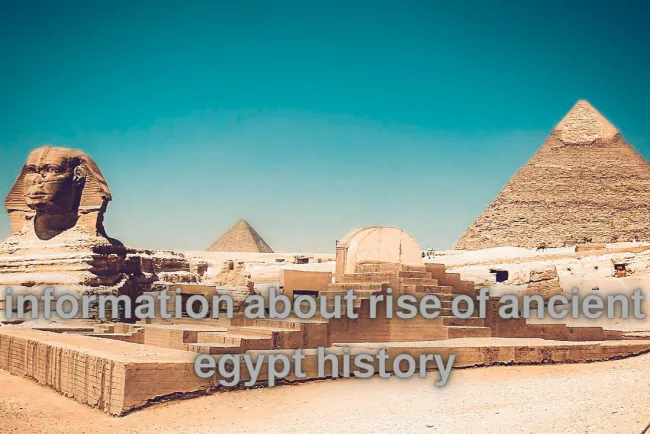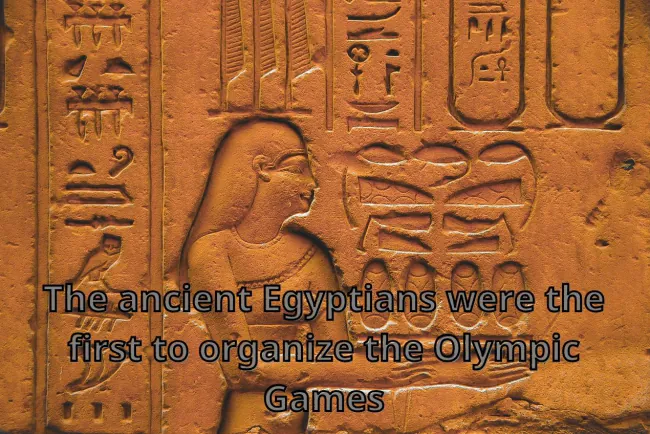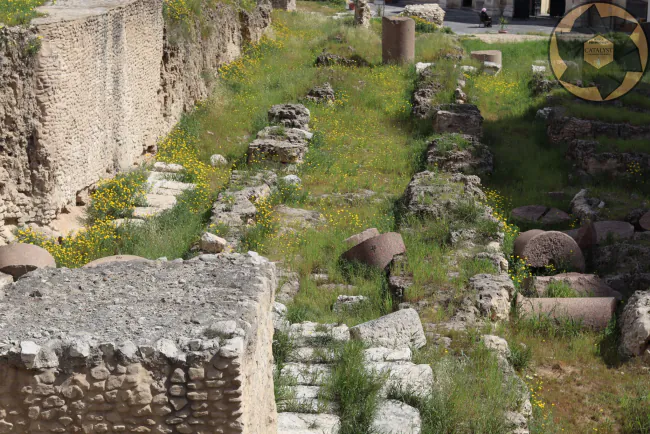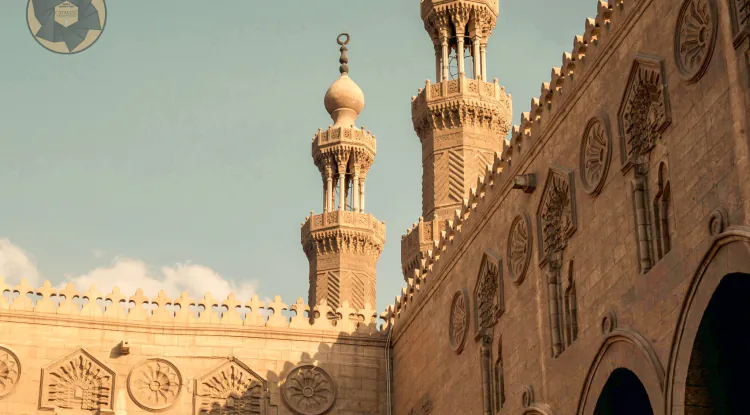pompey's pillar Alexandria Egypt
One of the most famous landmarks of ancient Alexandria is the Roman monument called the Pillar of the Pillars, which has always been the subject of everyone’s admiration throughout the ages due to its splendor and the symmetry of its parts at the same time. To the point that many stories have been woven around it, including some that say that twenty-two people ate food on top of its crown.
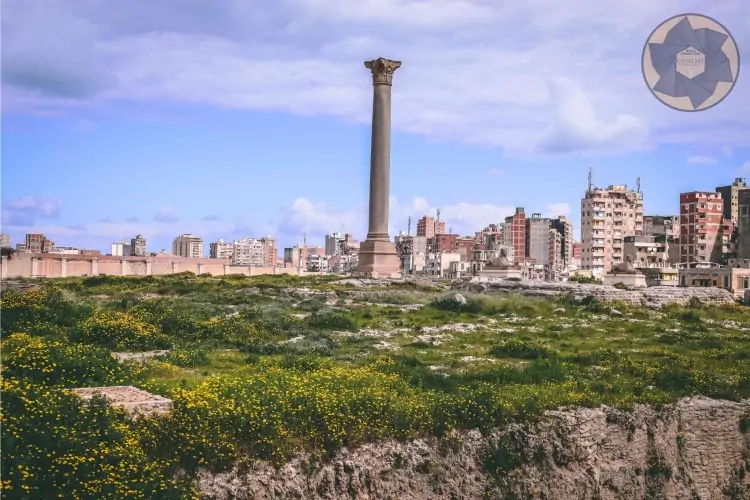
One of the subterranean galleries leads beneath the base of a gigantic column which still stand upright on the site today indeed, it is the only feature still standing.
what is pompey's pillar?
One of the most famous landmarks of ancient Alexandria is the Roman monument called the Pillar of the Pillars, which has always been the subject of everyone’s admiration throughout the ages due to its splendor and the symmetry of its parts at the same time. To the point that many stories have been woven around it, including some that say that twenty-two people ate food on top of its crown.
The description of the column:
The column is located in a prominent place among the ancient ruins on the high plateau, allowing it to be seen from a long distance. It was made of red granite stone. The body of the column is one piece, 20.75 meters long, with a diameter at the base of 2.70 meters and at the crown of 2.30 metres. As for the total height of the column, including The base and crown reach 26.85 metres.
The nomination of the column:
- This column has been given several names throughout the different eras. Since the Crusades, this column has been mistakenly known as the Pompey Column. This error is due to the fact that the Crusaders thought that the head of Pompey - the Roman leader who fled to Egypt to escape Julius Caesar and was assassinated in mysterious circumstances - had been placed in a A precious funerary urn above the capital of the column, influenced by what they bought from placing the ashes of the body of the Roman Emperor Trajan in a funerary urn above his column standing in Rome.
- The Crusaders arrived at this belief based on what the famous Arab historian Al-Suyuti wrote in the twelfth century AD, where he mentioned that he saw a dome above the capital of the column. The Crusaders thought it was the funerary urn referred to, in addition to the mistake they made as a result of the drawings that appeared in the 16th century of the column with its capital above it. He disliked calling the column “Pillars Column” because it dates back to the Arab era, and perhaps the name came as a result of the towering height of this column among the four hundred columns resembling masts, which Al-Suyuti referred to, and that is why he called it “Sari Al-Sawari” and it was later changed to Pillar of Masts.
- Al-Maqrizi tells us that the mast column was in the middle of a corridor containing 400 columns, some of which were thrown into the sea by the ruler of Alexandria, Asad al-Din Qaraja, during the reign of Sultan Saladin al-Ayyubi in the year 1167 AD, to increase the city’s fortifications. The French mission for sunken antiquities in 1997 in the eastern port found many Pieces that belong to these columns.
- Botti who excavated the site of the Serapuim at the end of XIX century , attributed the column to “emperor Theodosius I the great” . According to him the style to him the style of the monument belongs to the decadent byzantine period of the late 4th century A.D. Botti supposed that the column could have been a monument of the triumph of Christianity over paganism, and was erected on the Serapuim site from re –used elements after the demolition of the pagan temple. Botti solves also the problem of the Diocletianic inscription: he considers the base of the column as a reused element bearing an old dedicatory inscription.
The history of the pompey's pillar:
To build the foundations of this monument, stones were used, some of which date back to ancient buildings, as appears from the inscriptions engraved on many of them. On the eastern side of the base of the column, a Greek inscription was found stating that an Alexandrian named (Sestor, son of Satyrus) erected a statue of Queen Arsinoe Philadelphus, the famous sister of Ptolemy. The second and his wife at the same time.
Above this stone block, I found a block of flint stone with an inverted royal symbol on it bearing the name of King Psamtik I, one of the kings of the 26th Dynasty. I also found another block of the same stone engraved with hieroglyphs. It was built on the foundation and is inside an opening on the western side bearing the name of King Seti I, one of the kings of the Dynasty. 19, I also found another piece written in hieroglyphs, now preserved in the British Museum, bearing part of the name of King Senusret II or III, both of whom were kings of the 12th dynasty.
The column was called the Column of Pompey, and this means that it was built before Egypt submitted to Rome, or it was called the Column of Theodosius, and thus its history dates back to the Byzantine era. It was also said that the column was dedicated to Christianity after its victory in 391 AD, and this means that the column is pagan because the Alexandrians did not have the strength to erect a monument. On this scale, it is all wrong.
In order to determine the true proportion of this column, we must return to an ancient Greek inscription found on the western side of the base. This inscription sparked great scientific controversy because the granite surface has been eroded by time. Therefore, the inscription is incomplete in some of its parts. It is engraved in four lines and reads: “To the Emperor.” The just, the invincible protector of Alexandria, Diocletian, erected this column for Postumus, governor of Egypt.
This column was erected after Emperor Diocletian put down the revolution carried out in Alexandria by the Roman leader Lucius Domitius Domitianus, who had pranked Achilles. The city recognized it and supported him in his revolution. Emperor Diocletian himself came to Egypt in the second half of the third century, and Alexandria fell after a siege that lasted about eight months. As a result of all this, looting prevailed in the city, a large part of it was destroyed, and the city lost part of its eastern trade.
But Emperor Diocletian resided in the city for some time and returned to it the wheat tribute that Rome had collected annually from Egypt, and ordered its distribution free of charge to the poor residents of the city. He reformed its management system, which made people speak of his thanks, so this column was erected and the aforementioned text was engraved on it in memory of his memory and as an expression of thanks to the Alexandrians. It may be understood from the text that the capital of the column was surmounted by a statue of the emperor, similar to what was followed in many columns of previous emperors.
Erecting the column. It is known that after it was cut from the granite quarries at Aswan, it was transported by the Nile and then carried into the canal that supplies Alexandria with fresh water, part of which was approximately 570 meters away from the Acropolis. From the canal, the column was transported to where it stands now.
What's Your Reaction?







